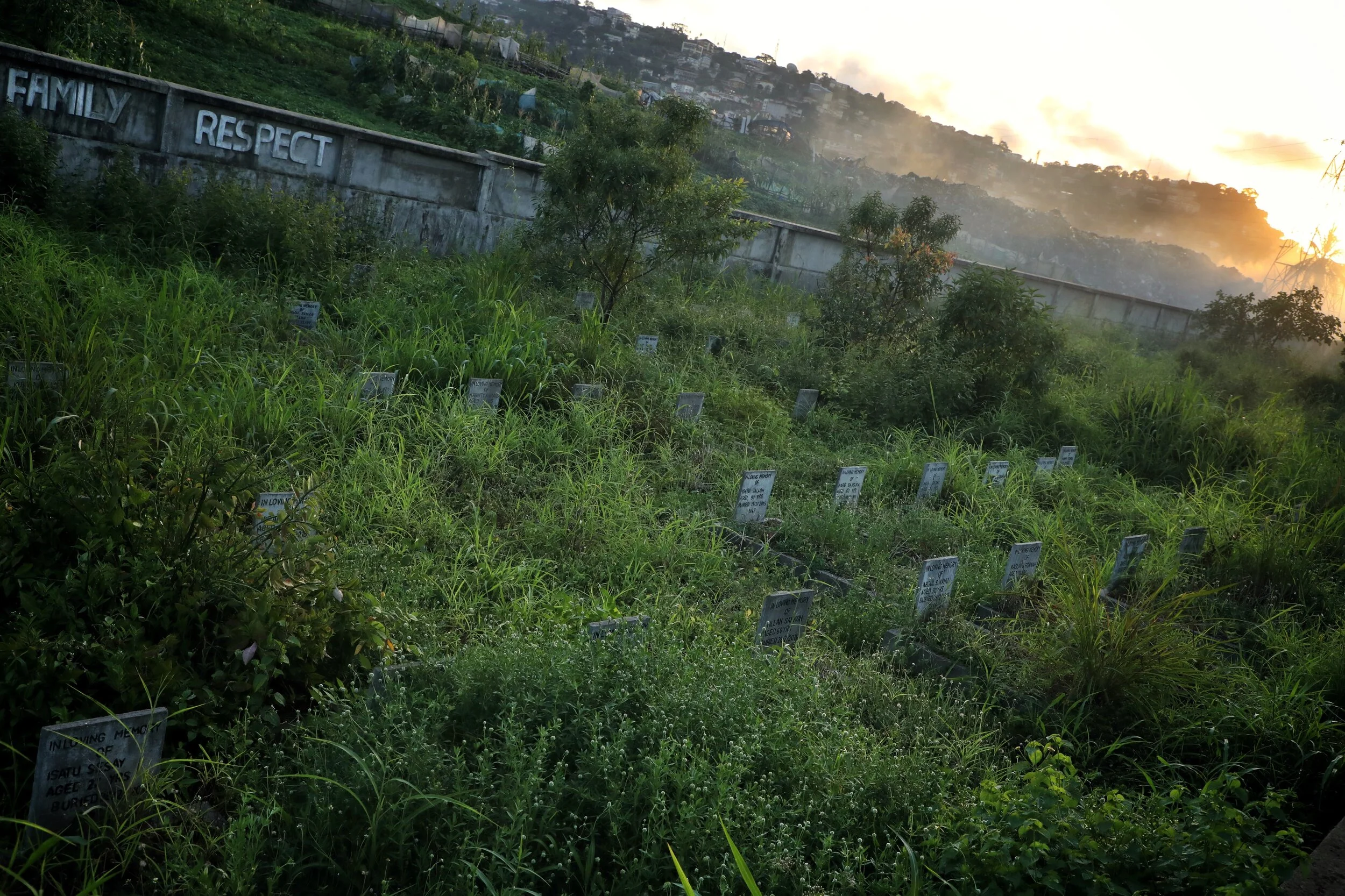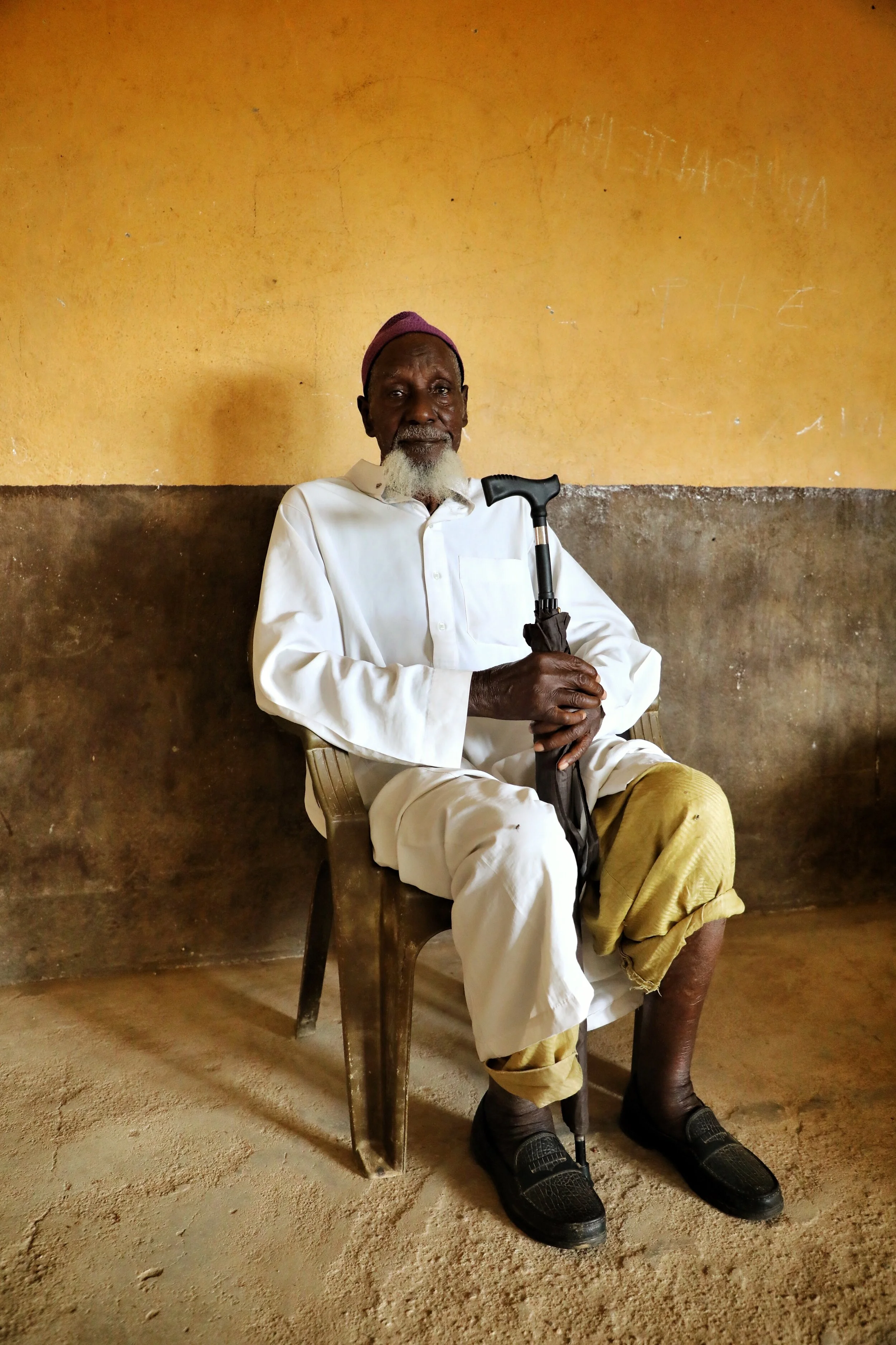Sierra Leone: Part Two
Ebola: As we drive along the last portion of the sealed road toward the eastern town of Tongo, pastor Joshua points out a small clearing on the roadside. He says, “This was one of the Ebola camps. Any person traveling from Guinea or eastern Sierra Leone must pass along this road. In the time of the Ebola (outbreak of 2014 - 2016), anyone with a fever would be stopped and forced to stay at the camp. Many, many people died here.” We pull off the road onto a thin patch of grass to inspect it further. We could see the outlines of where makeshift tents once housed the infected. Doctors and nurses cared for the dying in these camps in full hazmat suits and despite the extreme precautions taken, many of the caretakers became infected and died as well. Ebola is a vicious hot zone virus and when the disease takes hold, a person can die in as little as 3-10 days. The death of an Ebola victim is gruesome, as hemorrhaging, vomiting of blood, and an eventual crash out occur. But the unknown figure associated with Ebola is the terror and fear in the minds of people during an outbreak. Pastor Joshua relates this to us as we stand in the clearing, “The time of Ebola was worse than the civil war. We feared our loved ones, we feared opening doors, we feared touching other people, we feared eating food, we couldn't shake hands, we were forbidden from having church meetings for fear of spreading the virus. It was destroying us every day, even if we weren’t infected.”
Standing at former Ebola Camp with Pastor Joshua
For us, we witnessed this feeling of terror a week earlier when we were in front of the principal hospital in Freetown. Standing at the main entrance of this hospital we waited outside while our contact was inside gathering permissions for us to interview some of the doctors about their past Ebola experiences. It was at this time, we saw a young teenage boy wheeled to the front gate by what we assumed was his family member. The boy was unconscious and slumped over in a wheelchair. His body was completely swollen and he was uncontrollably expelling fluids. A nurse rushed over, but upon approaching, he stopped abruptly as he saw the boy’s condition. He then took five deliberate steps backward like he was trying to avoid a landmine. He told the others nearby to step back as well. We were at a distance of 15 feet and could immediately discern the fear on the face of the nurse. The nurse then rushed back into the hospital to retrieve a doctor and quickly the area began to clear out. Doctors finally arrived and took full precautions, but the fear of Ebola returning is never far from anyone's thoughts. This experience of what might or might not have been a dangerous virus was only a glimpse of what it must have been like daily during the outbreak. Over 11,000 deaths were documented from 2014 - 2016, but when you talk to anyone in the countries affected (Guinea, Sierra Leone, and Liberia) they will tell you the figure is probably much higher due to so many undocumented cases. Much like the civil war, Ebola impacted every person in Sierra Leone. Family members died, it crippled the economy and still to this day a stigma is assigned to countries affected by the virus. The 2014 - 2016 outbreak in West Africa was the worst in history, but Ebola continues to rage on as the second most deadly outbreak is currently occurring in Uganda and the Democratic Republic of the Congo. Nearly 3,000 are dead and the virus has yet to be contained.
Ebola Cemetery — Freetown, Sierra Leone
The Mission: In the eastern town of Kenema, Sierra Leone we begin our mission to minister the Gospel in rural villages. Our contact is a passionate pastor named Joshua who lives and works in a Muslim majority district. When he picks us up in his old Nissan Pathfinder, which he affectionately calls Grandmother, Joshua immediately begins to tell us of the dangers of ministry in the area. “Out here they are very hard Muslims. They can become violent if they don’t like what you are saying. I recently had a pastor friend who had a radio program and he was preaching and saying some things that the Imams (Muslim leaders) did not like. So they kidnapped him. We thought he was dead, but they held him for some time in the bush and beat him regularly until they released him. Praise God he is alive.” As we drive through the downtown of Kenema the equatorial heat is stifling. Almost every shop on the main street is a diamond buying house. They have names like Diamond King, House of Jewels or Pharaoh Diamonds. The town of Kenema is a popular trading post where pit miners come to sell their rough stones. It’s in this region where the term Conflict Diamonds and Blood Diamonds became infamous. Back in the ’90s The RUF rebels captured many of the mines during the civil war and used the money to buy arms and fund their activities. These towns in the eastern district became haunts for illicit arms dealers and diamond traffickers.
Diamond pit mine workers — Kono District, Sierra Leone
The next morning, pastor Joshua tells us the village we will visit is 100% Muslim. We all pray and then set off in the old Nissan Pathfinder. On the road to the village, Joshua says, “This area is where the RUF rebel’s originated from. There is a lot of darkness in this region. They practice witchcraft out here also. I’ve had people come to my church who have swallowed baby snakes as charms and then vomit them up when we pray for deliverance over them. They even eat human flesh out here as prescribed by witchdoctors. It’s very evil. Not only that but this is the same road where Ebola entered Sierra Leone.” When we arrive at the village we walk around with the elders. They welcome us. We sit and chat for a little while and then speak about why we’ve come. As we share the Gospel we notice that every person is fixated and listening intently. Most in this village have seen the signs of the cross but know nothing of what it means nor of Jesus’ life and resurrection. As we explained the details of the Gospel, people nod with smiles as we tell them the words Jesus spoke. “I will never leave you nor forsake you...I have come to give life and life more abundantly...He that believes in me has everlasting life.” As we continue sharing about Jesus’ triumph on the cross, His resurrection and His promised return, each face looks more and more intent to hear the next part. There was no hardness of heart or malice towards the words we spoke, but instead, there was an openness to the Gospel. When we ask for those who want to receive Jesus as Lord, it’s unanimous. They all desire to accept Him. After we pray with them, a furious clapping and joyful yell breaks out amongst them. It’s a beautiful moment and Joshua says to us amid the celebration, “I will come here every week and start a church in this place.”
(Road to Tongo, elder and women at village, group listening to the Gospel, Pastor Joshua)
The next day we headed to the diamond-rich area of Kono. The muddy red road was slow going and a few times we have to get out and push the vehicle free by placing stones under the wheels. When we arrive in the town of Tongo many people had heard we were coming and were waiting for us. Once again we shared the Word of God and once again all pray to receive Christ Jesus. Among the crowd, there was one elderly woman we will never forget. She was blind and could not walk. Her precious daughter carried her down the road to hear the message we came to speak. It brings tears to the eyes to see such hunger and wanting of the Gospel. In the days that followed, we would visit schools, laborers in the diamond pits and all different walks of life. In a place known for such hardships and a dark past, it was incredible to see the light of the Gospel breakthrough in power. Near the end of our time with pastor Joshua, he said, “In each of the places we visited, I am going to start a church. The people are so happy and they want me to come back. This time was such a blessing. Praise God!”
In Him,
Tim and Will












